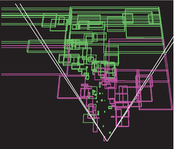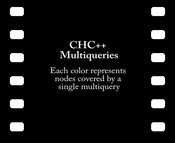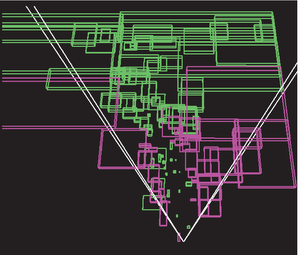Information
- Publication Type: Journal Paper with Conference Talk
- Workgroup(s)/Project(s):
- Date: April 2008
- Journal: Computer Graphics Forum (Proceedings Eurographics 2008)
- Volume: 27
- Number: 2
- Location: Crete
- Lecturer: Oliver Mattausch
- ISSN: 0167-7055
- Event: EUROGRAPHICS 2008
- Conference date: 14. April 2008 – 18. April 2008
- Pages: 221 – 230
- Keywords: temporal coherence, dynamic occlusion culling, occlusion queries
Abstract
We present a new algorithm for efficient occlusion culling using hardware occlusion queries. The algorithm significantly improves on previous techniques by making better use of temporal and spatial coherence of visibility. This is achieved by using adaptive visibility prediction and query batching. As a result of the new optimizations the number of issued occlusion queries and the number of rendering state changes are significantly reduced. We also propose a simple method for determining tighter bounding volumes for occlusion queries and a method which further reduces the pipeline stalls. The proposed method provides up to an order of magnitude speedup over the previous state of the art. The new technique is simple to implement, does not rely on hardware calibration and integrates well with modern game engines.Additional Files and Images
Additional images and videos
 image:
color coded state changes induced by CHC++
image:
color coded state changes induced by CHC++
 multiqueries-video:
video of multiquery accumulation in the vienna scene
multiqueries-video:
video of multiquery accumulation in the vienna scene
 walkthrough-videos:
used walkthroughs in powerplant
walkthrough-videos:
used walkthroughs in powerplant
Additional files
Weblinks
No further information available.BibTeX
@article{mattausch-2008-CHC,
title = "CHC++: Coherent Hierarchical Culling Revisited",
author = "Oliver Mattausch and Jir\'{i} Bittner and Michael Wimmer",
year = "2008",
abstract = "We present a new algorithm for efficient occlusion culling
using hardware occlusion queries. The algorithm
significantly improves on previous techniques by making
better use of temporal and spatial coherence of visibility.
This is achieved by using adaptive visibility prediction and
query batching. As a result of the new optimizations the
number of issued occlusion queries and the number of
rendering state changes are significantly reduced. We also
propose a simple method for determining tighter bounding
volumes for occlusion queries and a method which further
reduces the pipeline stalls. The proposed method provides
up to an order of magnitude speedup over the previous state
of the art. The new technique is simple to implement, does
not rely on hardware calibration and integrates well with
modern game engines.",
month = apr,
journal = "Computer Graphics Forum (Proceedings Eurographics 2008)",
volume = "27",
number = "2",
issn = "0167-7055",
pages = "221--230",
keywords = "temporal coherence, dynamic occlusion culling, occlusion
queries",
URL = "https://www.cg.tuwien.ac.at/research/publications/2008/mattausch-2008-CHC/",
}


 draft
draft